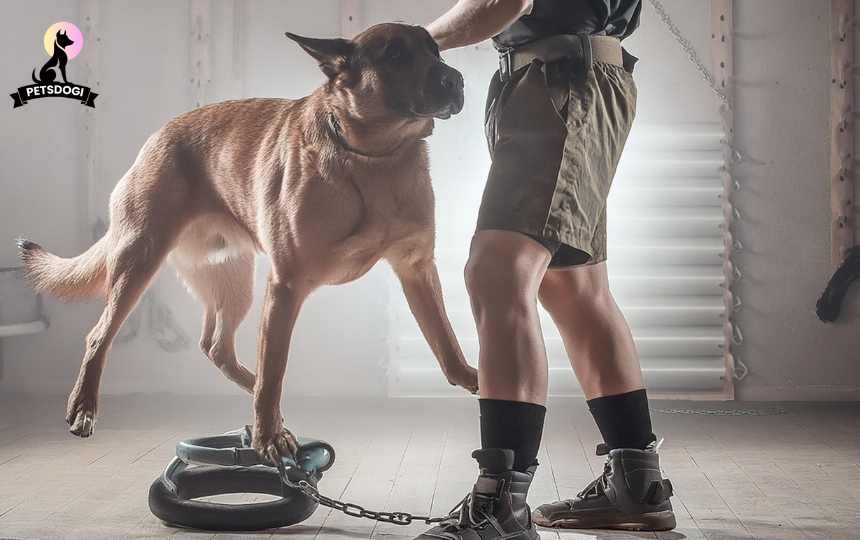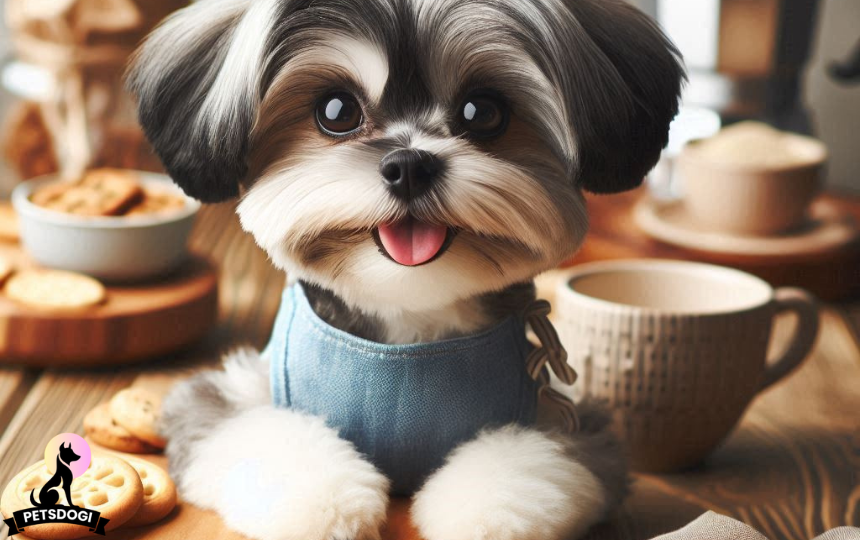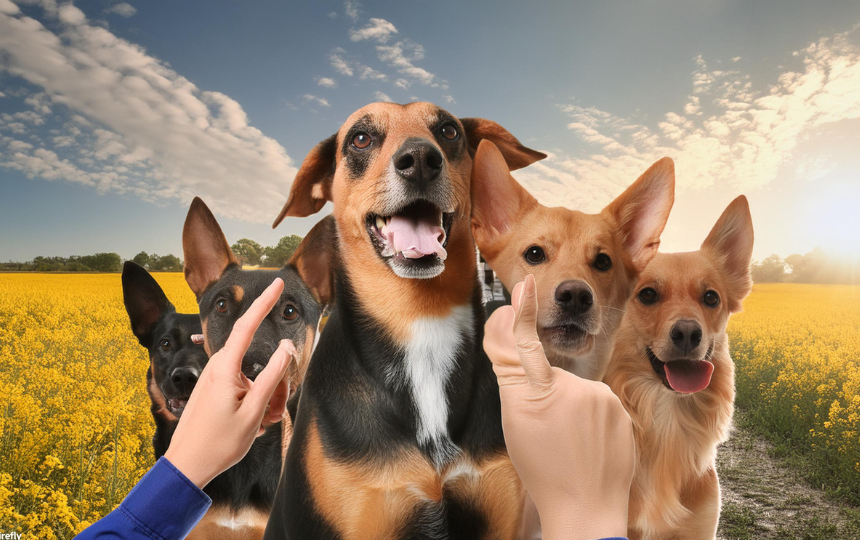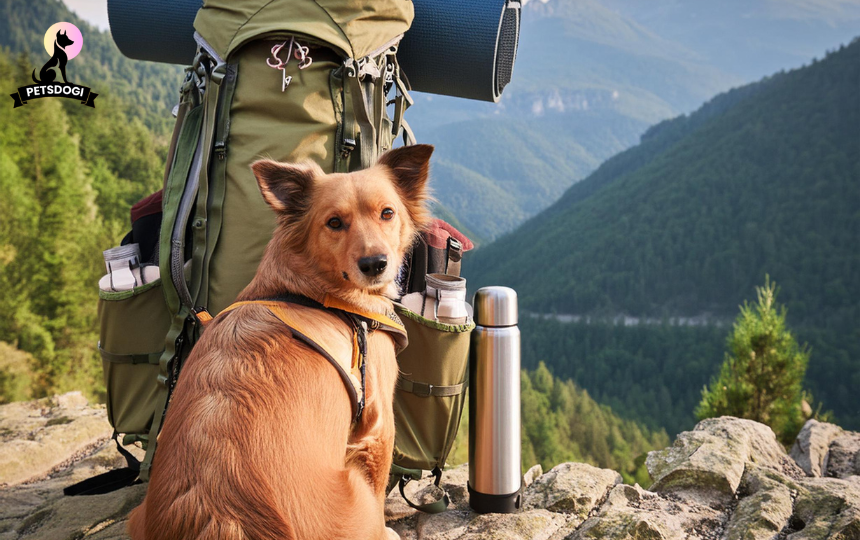Are you prepared to go right into dog training? It’s similar to this amazing journey when your cuddly companion turns into the most polite and happy member of your family.
Here, we’ll look at doable tactics and tried-and-true ways to genuinely bring out the best in your cherished pet.
We can assist you whether you’ve recently brought a lovely little furball into your home or are adjusting to the ups and downs of regular puppy antics. Consider this guide as your go-to partner for building a strong bond with your new four-legged friend. Now, let’s begin this thrilling journey of training advice, guaranteeing a wonderful and peaceful friendship for you and your faithful partner!
2. Readying the Dog for Arrival
It is essential to take proactive measures to get your home ready for your new puppy’s arrival before the pitter-patter of little paws fills it. The early going laid the groundwork for a safe and happy atmosphere. Here’s a summary of things to think about:
2.1 Actions to Take Prior to Taking a New Puppy Home: •
Research Breeds: Learn about the particular requirements and traits of the breed you’re bringing home. The energy levels, grooming needs, and temperaments of different breeds vary.
Dog-Proof Your House: Make your home a secure place by getting rid of anything that could hurt your dog, like small, ingestible objects, electrical cables, and poisonous plants. Puppy-proofing your home keeps your new companion safe and helps avoid mishaps.
• Essential Materials:
• Get all the supplies your puppy will need, such as a cozy bed, bowls for food and water, wholesome puppy food, an ID-tagged collar, and safe toys to keep their minds active.
• Rest Area Designated:
• Provide a comfortable and peaceful space for your puppy to retreat to when needed. This eases the transition period and fosters a sense of stability.
• Scheduled Vet Appointment: Make an appointment with your veterinarian to check on the health of your puppy and to go over vaccination schedules, preventive treatment, and any possible issues.
2.2 Setting Up the Household:
• Establish a Safe Space: Make a special location where your puppy can feel safe and comfortable. This could be a room with their bed and toys, or it could be a crate.
• Introduce Your Family:
Introduce any additional family members or pets you may have carefully and gradually. Healthy relationships are fostered by positive interactions from the beginning.
• Create a Schedule:
Puppies love consistency. Establish a regular routine for eating, sleeping, playing, and potty breaks. Your dog will feel more secure if things are predictable.
• Dog-Proof the Backyard:
Make sure your yard is safe and devoid of any possible escape routes if you have one. Establish a secure environment for exploration and play.
By doing these preliminary actions, you’re not only making sure that your new puppy adjusts smoothly, but you’re also setting the stage for training success and a strong relationship. You can follow along with the next part while you acclimate to your new furry family member.
3. The First Few Days with Your New Dog
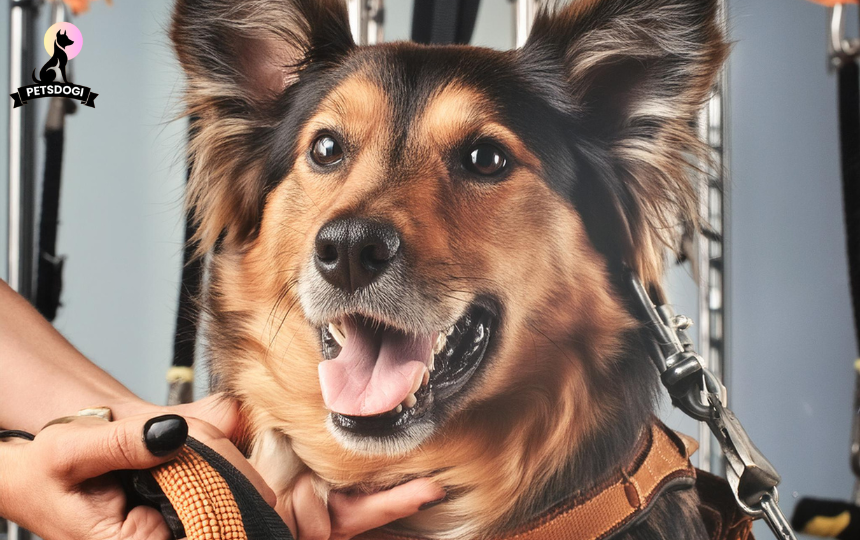
Taking a new puppy home is a thrilling journey, but it has its own rewards and difficulties. Establishing routines, developing trust, and acclimating your puppy to their new surroundings all need to happen during the first week. Now let’s go over the key elements of puppy care in these early days:
• 3.1 Things to Do and Things to Think About in the First Week:
• Gentle Introduction: Give your puppy the freedom to investigate their new environment at their own speed. Encourage them and provide moderate guidance to make them feel at ease.
• Stillness of Mind:
To avoid overstimulating your puppy, make time for peaceful, quiet periods. Calm surroundings facilitate rest and happy associations.
• Duration of Bonding:
Engage in good interactions, conversation, and gentle touching to create valuable bonding time with your dog. This enhances your relationship and fosters trust.
• Quick Play Periods:
Play for brief periods of time to release extra energy. Puppy energy bursts are short-lived, so moderate activity helps them avoid becoming tired.
• Overview of Fundamental Commands:
Presenting basic instructions such as “sit” and “stay.” To help you correlate orders with good things that happen, use positive reinforcement like praise or treats.
• 3.2 Crucial Elements of Caring for Puppies:
• Mealtime Schedule:
To help you control your puppy’s eating, set up a regular feeding schedule. Observe the feeding recommendations for puppies that your veterinarian or breeder have supplied.
• Sleep Routine:
Sleep is essential for the growth and development of puppies. Establish a peaceful, cozy sleeping space and stick to a regular sleep pattern.
• Potty Training:
Take your puppy outside often to start potty training, especially after meals and naps. Provide them encouragement when they go potty outside.
• Acculturation:
Expose your puppy to a range of stimuli, such as distinct people, sounds, and surroundings. Good early socialization helps produce an adult dog that is well-mannered.
• Grooming and Handling:
Your puppy should be handled gradually, starting with light brushing and nail trimming. This fosters trust and makes grooming in the future easier.
3.3 Establishing Confidence and Trust:
• Positive Confirmation:
Apply strategies for positive reinforcement on a regular basis. To reinforce positive habits, give sweets, praise, or affection as a reward for desirable behaviors.
• Forbearance and Comprehension:
Recognize that your dog is growing and adjusting to a new surroundings. Establishing trust takes time and patient direction.
• Uniform Regulations:
Set uniform guidelines right away. This clarity fosters security and helps your puppy understand what’s expected of them.
By focusing on these early days with your new puppy, you set the stage for a well-adjusted and trainable companion. The next section will guide you through addressing common behavioral challenges that may arise during this crucial period.
4. Dealing with Typical Dog Behavior
Fostering a happy and well-behaved canine companion requires an understanding of typical puppy behaviors and how to respond to them. This section will discuss typical behaviors that could occur and useful approaches to deal with them:
• 4.1 Handling Typical Behavioral Problems:
• Leaping:
Problem: Exuberant leaping is a frequent occurrence, particularly during social greetings.
Recommendation: Provide an alternate behavior, like sitting, and incentivize composed conduct.
• Biting:
Problem: When puppies use their lips to explore the world, they may bite playfully.
Redirect attention, give suitable chew toys, and utilize positive reinforcement to encourage kind behavior as a solution.
• Pulling on a leash:
Problem: During walks, pulling on the leash can be annoying and difficult.
Solution: Use incentives for calm walking and good reinforcement to teach loose-leash walking.
Barking
Problem: Excessive barking might be brought on by fear, excitement, or a need for attention.
Remedy: Determine the reason for the barking and take appropriate action. Offer praise when a quiet behavior occurs.
4.2 Training in Crates That Works:
•Crate Training’s Goal:
Housetraining and reducing destructive tendencies are facilitated by crate training, which gives your puppy a safe, den-like environment.
• The Crate Train Method:
• Slowly introduce the crate by connecting it to happy occasions like meals and sweets.
• Start off with brief crate sessions and progressively extend them as your puppy gets more at ease.
• To make the crate comfortable, place a blanket or comfy bed inside.
• Make the crate a happy and secure environment for your puppy rather than a means of punishment.
4.3 The Value of Dealing with Behavioral Issues as Soon as Possible:
• Prevent Unwanted Habit Formation:
• Dealing with behavioral issues at an early stage helps avoid the formation of undesirable behaviors that could be hard to eradicate.
• Strengthens the Bond:
• You strengthen your link with your puppy by getting to know them and helping them through difficult situations, which fosters positive engagement and trust.
• Encourages Long-Term Good Conduct:
• Early intervention creates a good basis for further training and lays the groundwork for long-term well-behaved conduct.
4.4 Effective Training Techniques for Behavioral Difficulties
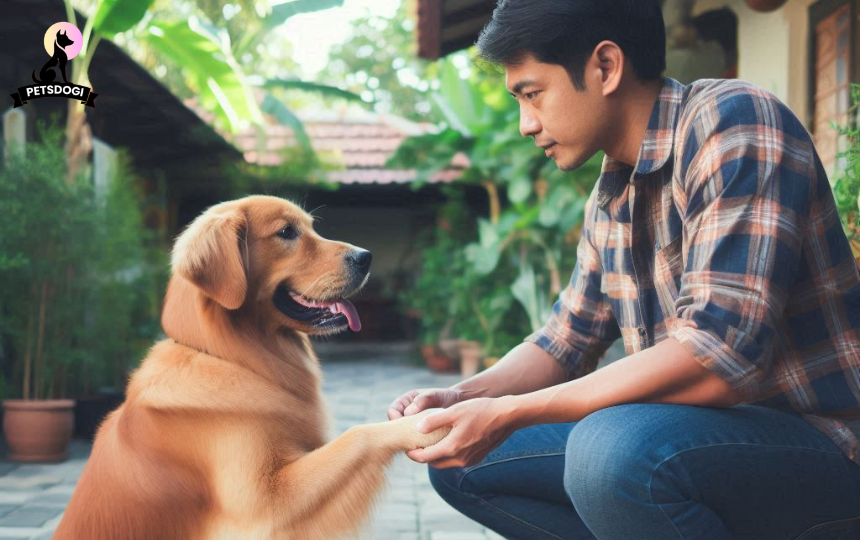
• Training Based on Rewards:
• Apply positive reinforcement strategies, including sweets, compliments, or games as rewards for desired behaviors.
• Uniformity in Directives:
• Use instructions and rewards consistently. Maintaining consistency teaches your puppy what is expected of them and rewards positive behavior.
Becoming aware of and responding to typical puppy actions sets the foundation for a well-mannered dog. Your dog and you can have a healthy connection if you use positive training techniques and deal with problems early on. In the following section, we will examine practical methods for thorough puppy training.
5. Methodical Training of Puppies
A crucial first step in teaching your dog and building a solid relationship is to do it in an efficient and thoughtful manner. This section will introduce you to positive puppy training ideas and walk you through the significance of having a well-thought-out training plan.
5.1 The Value of a Carefully Considered Training Program:
Explicit Objectives:
• Set attainable and unambiguous training objectives for your puppy. Having clear objectives provide direction for any kind of behavior, including fundamental instructions, leash etiquette, or targeted actions.
• Uniformity:
• A training program guarantees uniformity in your methods, directives, and incentives. Dogs thrive on structure and well-defined boundaries.
• Flexibility:
• A flexible strategy enables modifications in response to your puppy’s development and specific requirements. Since every dog learns differently, flexibility is essential.
5.2 The Philosophy of Positive Puppy Training:
• Pay Attention to Rewards:
• By rewarding desired behaviors, you can get your puppy to repeat them by using positive reinforcement. Treats, compliments, or playtime are examples of rewards.
• Steer clear of punishment:
• Positive training places an emphasis on avoiding severe penalties. Redirect undesirable behavior instead, and give praise for constructive substitutes.
• Fosters Trust:
• The relationship you have with your puppy is strengthened and trust is built via positive reinforcement. It establishes a favorable connection with training sessions.
5.3 A Framework for Four-Step Training:
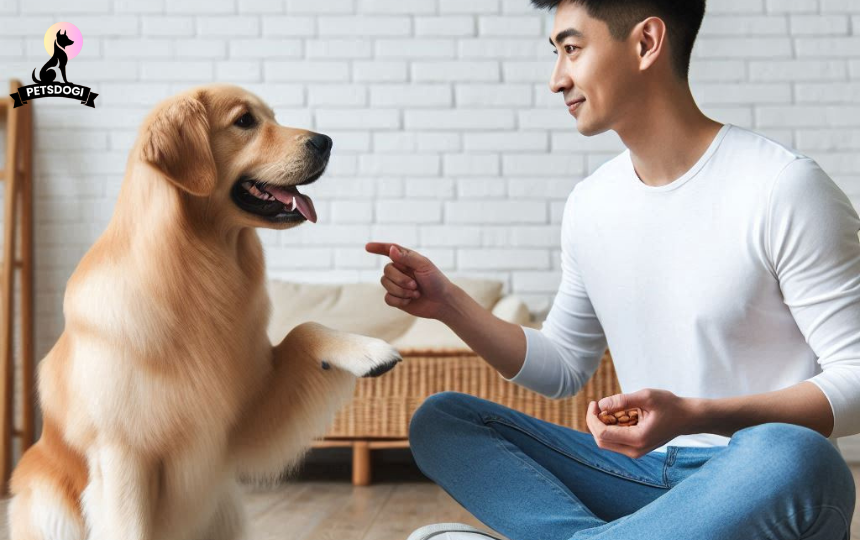
• Step 1: Make a Relationship
• Through bonding activities, establish a strong attachment with your puppy. To build a solid and trustworthy connection, spend meaningful time with one another.
• Step 2: Provide Fundamental Orders:
• Use positive reinforcement to introduce basic commands like sit, stay, and come. Repetition on a regular basis aids with command comprehension and response in your dog.
• Step 3: Target Particular Behaviors:
• Recognize and deal with particular behaviors that pertain to your way of life. This could involve actions like as courteous greetings, good leash manners, or maintaining composure during feeding.
• Step 4: Consistent Practice
Maintaining practice is essential for strengthening acquired skills. Even short training sessions on a regular basis will help your puppy retain and apply what they have learned.
5.4 Including Play in Exercise:
• Play as an Incentive:
• Reward positive behavior with playing. Playing interactively improves your relationship and stimulates the mind.
• Using Play to Train:
• Incorporate training directives into playtime. Asking your puppy to sit before tossing a toy, for instance, stimulates their cognitive abilities and strengthens obedience.
5.5 Promoting the Solving of Problems:
• Engaging Games and Toys:
• Offer games and puzzle toys that promote problem-solving. For a well-rounded dog, mental stimulation is just as vital as physical training.
• Developing Self-Belief:
• Solving problems helps your dog become more self-assured and independent. This is crucial for breeds that are renowned for their intelligence and capacity for problem-solving.
Beyond teaching simple commands, strategic puppy training focuses on fostering an atmosphere that is both pleasant and stimulating in order to raise a dog that is well-mannered and self-assured. Your dog will have a healthy relationship and be well-adjusted if you follow a systematic training plan and use positive training ideas. We’ll look at opinions from leading dog experts and their insightful advice for effective training in the next part.
Conclusion
In summary, learning how to train your dog involves an in-depth investigation of the special relationship that exists between you and your furry friend, not just a set of orders. By being well-prepared, addressing typical problems, and using practical methods, you can mold your dog’s behavior and create a lifetime bond based on mutual respect, cooperation, and shared experiences. Beyond teaching well-mannered habits, training brings with it a wealth of companionship, shared experiences, and understanding. While you persist in this endeavor, keep in mind that the connection you have made during training is a strong and long-lasting thread that permeates your relationship and builds a satisfying and durable link that endures over time.

